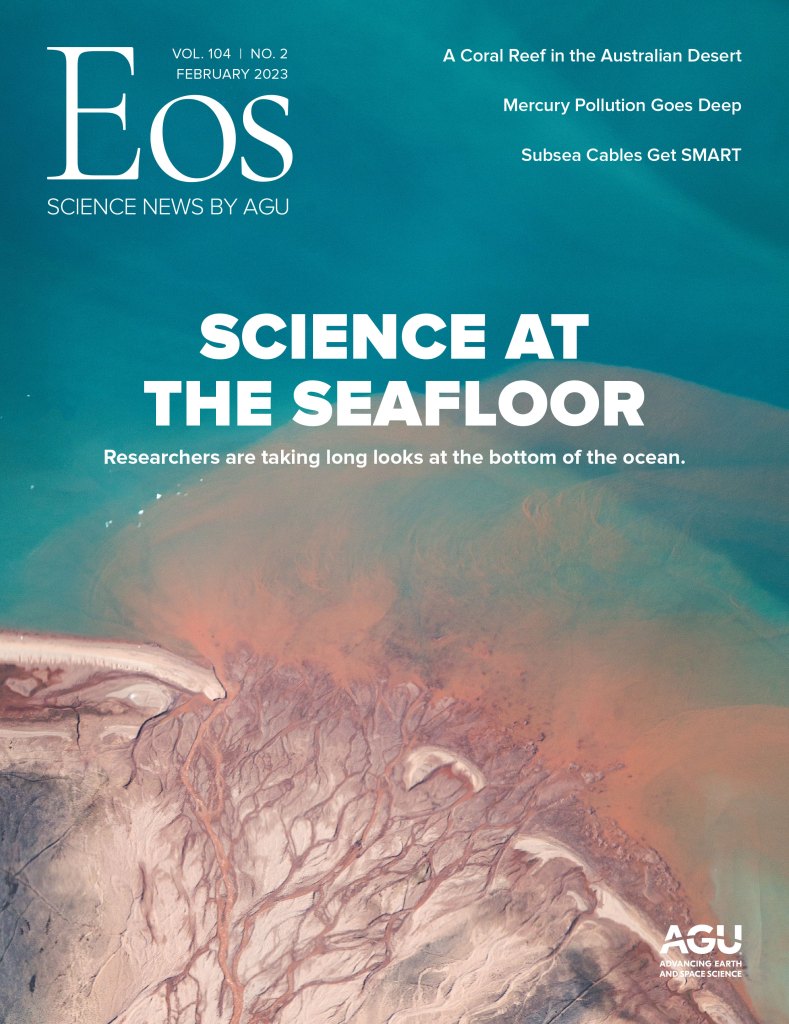The seafloor is not as serene as it seems. In fact, it’s a busy, flexible hub of scientific activity.
Our changing climate and the crucial nexus of ocean and atmosphere are driving scientists to collate and curate a centralized database of seawater oxygen isotope data. Such isotopes can inform us about processes related to ocean circulation, riverine input, ocean-atmosphere water exchange, and continental ice sheet volume on timescales spanning glacial–interglacial periods and longer, write Kristine DeLong, Alyssa Atwood, Andrea Moore, and Sara Sanchez, but efforts to create a machine-readable, metadata-rich database consistent with findability, accessibility, interoperability, and reusability (FAIR) standards has been a challenge for more than 30 years. Still a work in progress, the new database has already revealed discrepancies between tracked and modeled estimates of coral-derived isotope variability, as well as enormous swaths of the ocean that lack any isotope data at all. Read “Clues from the Sea Paint a Picture of Earth’s Water Cycle.”
Far from having a lack of data, scientists tracking the origin of a 2021 oil spill in the eastern Mediterranean had to grapple with the (literal) chaos of eddies, currents, multinational ship traffic, and satellite-derived radar imagery. Using innovative mathematics to better resolve geometry in the ocean’s dynamical systems, they developed a model “to keep turbulence from serving as a cover for environmental pollution.” Learn more about “Seeing Through Turbulence to Track Oil Spills in the Ocean” from Guillermo García-Sánchez, Ana M. Mancho, Antonio G. Ramos, Josep Coca, and Stephen Wiggins.
Lack of data, arrays of data: In “Grains of Sand: Too Much and Never Enough,” Alka Tripathy- Lang explores sand mining and its discontents. Sand is second only to water as an exploited natural resource (used in everything from concrete to smartphone screens), but scientists, engineers, and industry officials are quick to note that the sands that anchor seafloors and deserts are not created equal: “The crisis that exists around sand is mostly a crisis of sand sustainability, not of availability,” said Daniel Franks of Australia’s Sustainable Minerals Institute.
Seafloor stories also appeared at AGU’s Fall Meeting 2022. Some scientists are investigating how benthic amphipods are providing clues to marine mercury pollution (“In the Deepest Ocean Reaches, a Potent Pollutant Comes to Rest”), whereas others are considering how the subsea cables that transmit cat videos and financial transactions could also contain temperature, pressure, and seismic sensors (“Making Underwater Cables SMART with Sensors”). Finally, we are reminded that the seafloor can define regions millions of years after the actual sea has disappeared, as we learn in “A Mysterious Dome Reveals Clues to Australia’s Miocene History.”
So what’s up at the bottom of the ocean? A lot of science, and Eos is happy to delve deep.
—Caryl-Sue Micalizio, Editor in Chief


